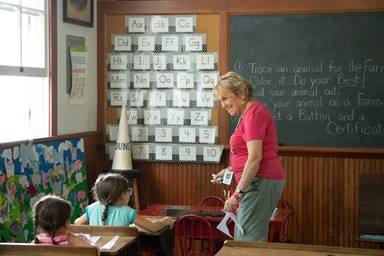Empowering Strong Communities Through Education
For new superintendents, the temptation to assume ownership of schools can be strong, but this perception couldn’t be further from the truth. The heart of the matter is that it’s the communities that truly own their schools. Without this foundational belief, superintendents cannot rely on vital support from these neighborhoods when it’s most critical. As a result, the most effective professionals invest substantial time and energy in cultivating unwavering trust and robust alliances with communities, local enterprises, and organizations.
Debra Mercora of NJ explains the engagement of the community in school activities goes beyond mere benefits for the institution; it molds an institution that is diverse and tailored to meet the needs of its students. This isn’t just an option; it’s an imperative for unlocking the full potential of learning across the entire district.
With a comprehensive vision, the superintendent acts as a bridge-builder, forging connections with local community members, businesses, parents, and organizations. By engaging in open dialogues, actively seeking input, and valuing diverse perspectives, the superintendent fosters an environment of collaboration and inclusivity. Through strategic initiatives and shared goals, these partnerships flourish, generating resources, support, and a collective commitment to the success of students. The superintendent’s ability to rally these stakeholders around a common educational vision propels the institution toward excellence, enriching educational experiences and positively impacting the entire community.
Redefining Traditional Structures in Favor of Empowerment and Collaboration
Superintendents require their principals to change the traditional bureaucratic structure many still follow. In its place, collaboration and community empowerment take its place — a factor that will only serve to benefit the student body and its ever-changing demographic.
To do this, such professionals are listening, creating spaces for conversation, and urging risk-taking among their school leaders and teachers. But building relationships extends beyond the classroom and the school, seeping into the wider community and all its valid opinions it has to offer.
Schools Reflect Their Support, Not Their Superintendent
One of the main reasons that superintendents focus on building strong external partnerships is the well-documented fact that these institutions represent their communities and not the single professional overseeing the district. Exceptionally functioning schools demonstrate a strong sense of ownership, leadership, and responsibility from the community and the teachers, principals, and long-term employees.

How to Engage the Public
Any visionary superintendent wields the power to foster a transformative relationship between schools and the surrounding community. By openly communicating the schools’ goals, challenges, and accomplishments, the superintendent can ignite a sense of shared ownership.
Collaborative initiatives that involve local businesses, organizations, and parents can be developed, aligning community resources with educational needs. Hosting town hall meetings, workshops, and volunteer opportunities encourages active involvement, demonstrating a commitment to transparency and improvement.
When the community witnesses their impact firsthand and recognizes the direct correlation between their investments and enhanced student experiences, a profound sense of ownership takes root. This partnership, driven by the superintendent’s leadership, can genuinely revolutionize the educational landscape and enrich the lives of all involved.


